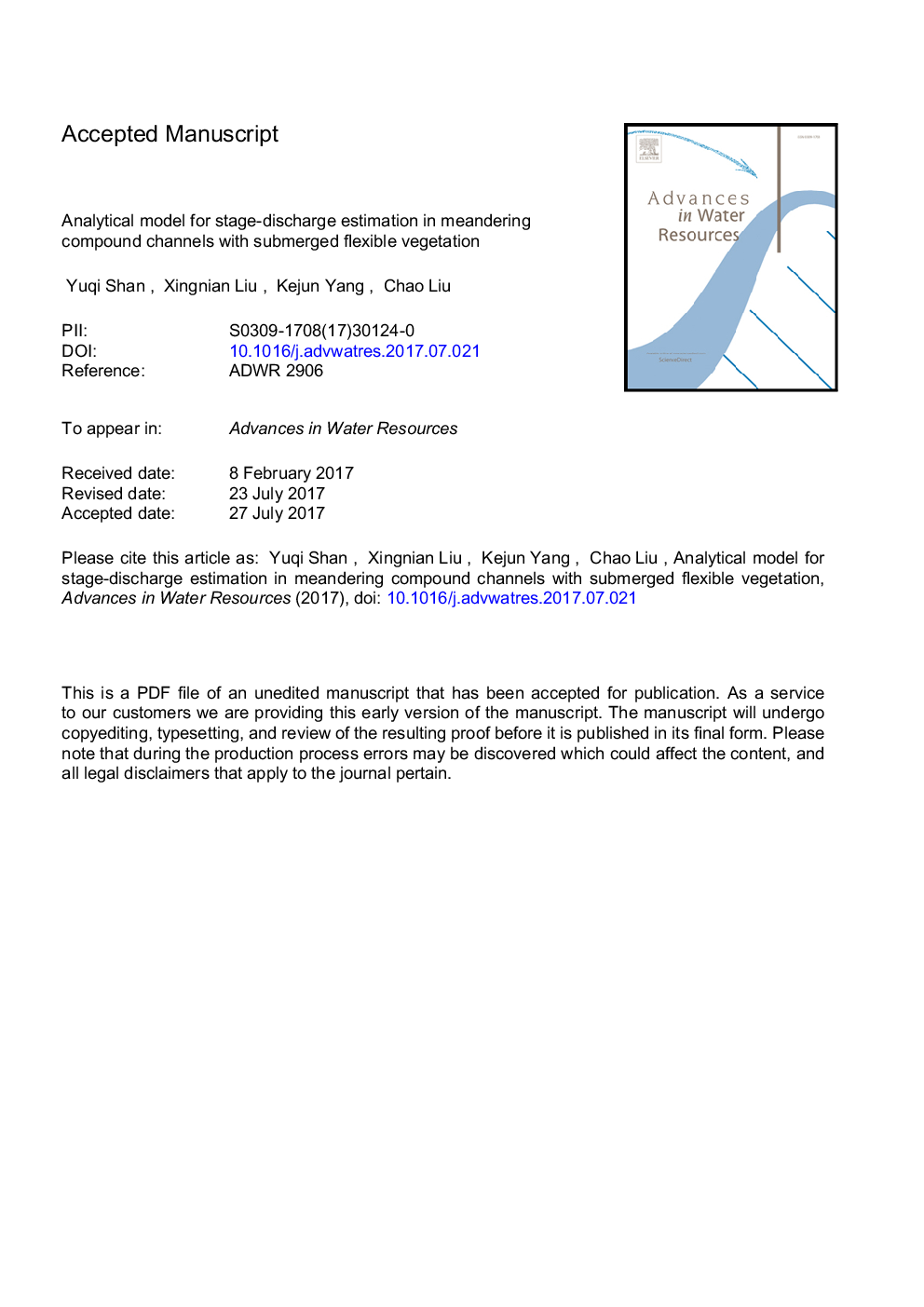| Article ID | Journal | Published Year | Pages | File Type |
|---|---|---|---|---|
| 5763886 | Advances in Water Resources | 2017 | 60 Pages |
Abstract
For overbank flows, submerged flexible vegetation on floodplains increases channel resistance and decreases channel conveyance capability. This study presents an analytical model for estimating the stage-discharge relationship in a meandering compound channel with dense, submerged, flexible vegetation on floodplains under high flow conditions. The mean velocity within a canopy was linked to the depth-averaged velocity, and a relationship between the two velocities was proposed. The governing equation was deduced in curvilinear coordinates, and the lateral shear stresses were found to be negligible, as validated by our experimental measurements in a large-scale meandering channel. Then, analytical solutions of subarea discharges and total discharge were derived by ignoring lateral shear stresses. Measurements from two flume experiments and one field study were used to verify the proposed model. The field case involved a natural river with both submerged and emergent grass on the floodplains. Good agreement between predictions and measurements indicated that the model accurately predicted subarea discharges and the stage-discharge relationships in a meandering compound channel with submerged vegetation. Finally, the predictions of this model were sensitive to the secondary flow parameters in the main channel but insensitive to those on the floodplains.
Keywords
Related Topics
Physical Sciences and Engineering
Earth and Planetary Sciences
Earth-Surface Processes
Authors
Yuqi Shan, Xingnian Liu, Kejun Yang, Chao Liu,
